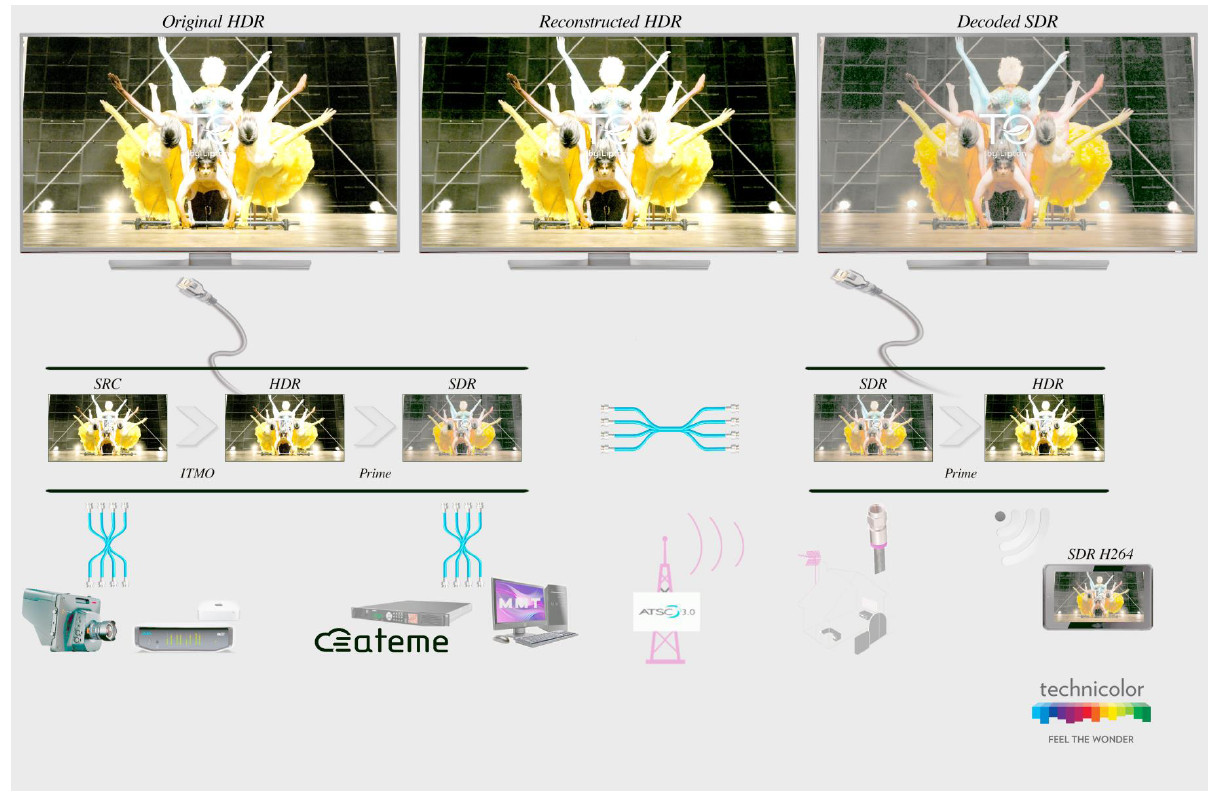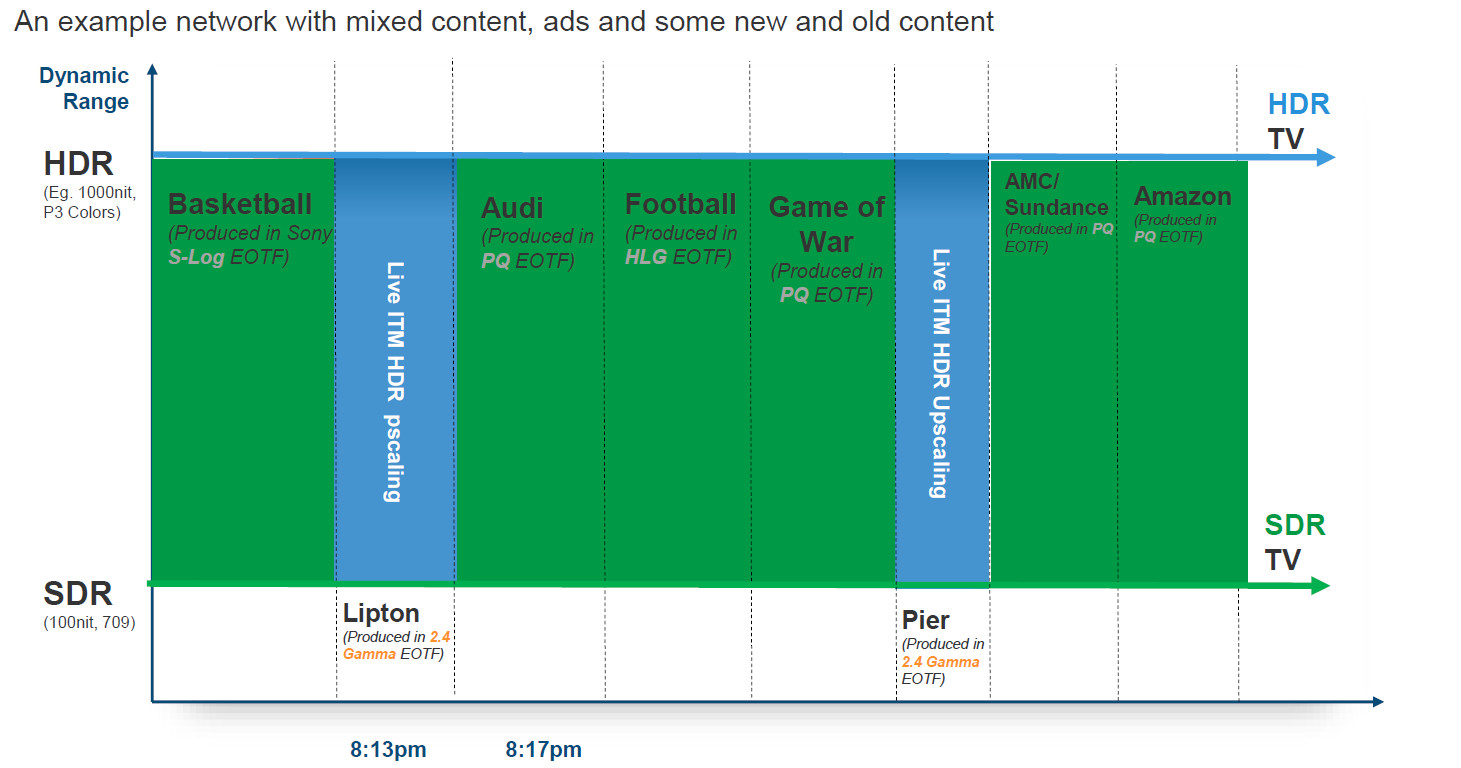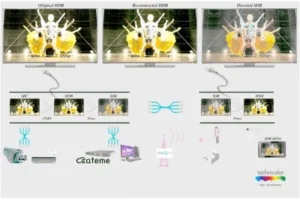We had a chance to catch up with Technicolor and Philips in their suite at the Renaissance Hotel at NAB. Just prior to the event, we joined a webinar that gave more details on their two companies combined approach to mastering, converting, encoding and delivering HDR and SDR content to end users in a single stream approach (Technicolor and Vubiquity Lay Groundwork for HDR Channels in 2016). At NAB, they demonstrated putting all these pieces together to show how an operator can now build a channel from HDR and SDR content and deliver this to customers.
The demo consisted of the streaming of live content which included programming and advertisements in HDR with several EOTFs and SDR formats. This was encoded in real time and transmitted in an ATSC 3.0 format to TVs in the suite. SDR content was upconverted to HDR using Technicolor’s Intelligent Tone Mapping processor and various EOTFs were converted to a common EOTF (PQ, we presume) for distribution (photos below). The Ateme encoder was used to take this common HDR stream and convert it to an SDR stream plus metadata, which is what was broadcast.


All the playback devices, HDR and SDR TVs as well as a tablet, were able to accept the single stream, which was SDR content plus metadata. The SDR devices ignored the metadata and played the SDR version while the HDR TV recognized the metadata and used it to rebuild the HDR signal from the SDR content.
Technicolor says they can do the upconversion from SDR to HDR on any content including graphics, interstitials, tickers, etc. They can even fix some of the color conversion issues with HGL. It turns out that some colors shift when HGL content is played back on an SDR display (as Technicolor demonstrated at CES – Man. Ed). For example, gold shifts to yellow, but with the Technicolor/Philips technologies, this is mitigated and gold stays gold, as was demonstrated on the TVs.
We also discussed the issue of some HDR content, particularly dark scenes, being harder to see with the lights on than the equivalent SDR version. (Are SDR TVs Superior to HDR TVs in Bright Environments?) That’s because the HDR PQ curve locks code value to certain luminance levels. Philips told us that their algorithms can use the data from the ambient light sensor in the TV and make adjustments to the PQ curve to improve picture performance. It essentially makes it look more like an SDR image in some cases.
We think this shifting/adjusting up of the PQ curve is similar to what Samsung is proposing as a new dynamic metadata standard, but with the shifting/adjusting information sent as metadata and not based on the ambient light sensor data. – CC

